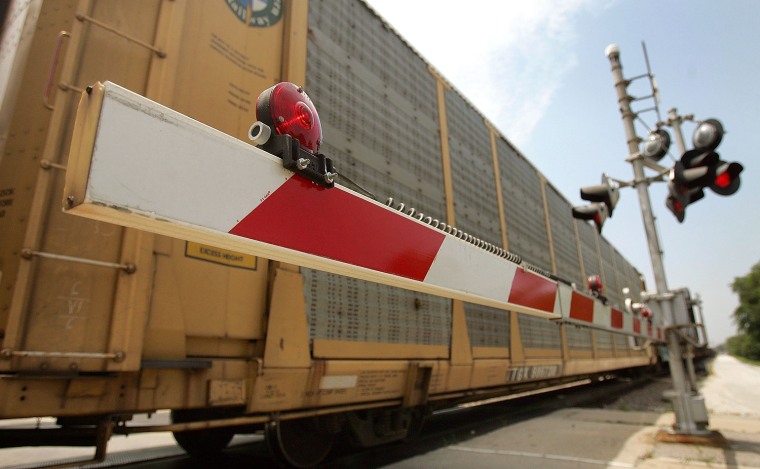Local officials in southwest Arkansas are resisting a railroad company’s offer to pay their city to close what federal authorities say is one of the nation’s most hazardous railroad crossings – with 15 train-vehicle collisions in the past decade.
The city of Ashdown, Ark., with a population of less than 5,000, was built around the railroad and Mayor Carroll McLarty explained that the city is reluctant to shut any of its five crossings because each serves a different part of the community.
“Our city is split right down the middle,” he said. “We have an equal number of citizens and businesses on one side as the other so all our crossings are important.”
The Front Street crossing in Ashdown is ranked atop a predictive database of dangerous railroad crossings developed by the Federal Railroad Administration, and is considered the crossing most prone to collisions by the state, based on factors such as traffic density, safety equipment and accident data. The FRA notes that its calculations are merely a prediction and do not necessarily indicate that a crash will occur at that crossing.
Kansas City Southern Railway officials said they have twice tried to partner with the city to reduce the number of crossings, offering the city $100,000 to do with as it pleased in exchange for closing two crossings.
“They can buy chalk to paint lines on the little league baseball fields or buy new tires for police cars,” said Steve Weston, a railroad crossing coordinator for the state.
The railroad says closing two crossings will enable it to add safety equipment to the other three crossings, protecting its trains and personnel and make the highway safer for drivers.
The Front Street crossing has no gates or flashing lights that warn when a train is approaching, just simple “cross-buck” signs telling drivers that they are about to cross railroad tracks.
The railroad and the state offered to fully fund the closure of two crossings and update the other three crossings with flashers and gates. They also would synchronize traffic lights on Front Street and a highway on the other side of the tracks so that “no one is left stranded on the tracks when a train is coming,” Weston said.
McLarty, however, thinks the city should try to avoid closing any crossings, but especially Front Street.
McLarty said the crossing is the most convenient – it’s the first inside the city limits and provides a direct route to the hospital and the main highway in Ashdown, making it a naturally busy thoroughfare.
Weston agrees that the Front Street crossing should remain open.
“It would be foolish to push traffic down the road to another crossing,” he said. “It makes sense to fix it.”
McLarty appointed an 11-member committee several months ago to come up with the best solution for the city’s crossing troubles. The group has not yet reported back.
“The solution they come up with is something that we want to be a true solution, no more Band-Aids,” he said. “It’s been ignored now for 50 years and it’s time we do something that actually saves lives.”
The crossing has been the scene of 18 reported accidents since 1982.
In 2009, two fatal accidents occurred there within a month of each other.
In August 2009, a 67-year-old pick-up truck driver failed to yield to an incoming freight train traveling at 4 mph. Despite the low speed, the train killed the man behind the wheel and a passenger after striking the truck.
Just 20 days later, a 34-year-old woman was struck and killed when a freight train traveling at 43 mph hit her vehicle.
Since then, there have been five train-vehicle collisions at the Front Street crossing, one of which resulted in an injury.
Failure to yield or disobeying warning signs about trains cause many of the accidents in Ashdown and throughout the country, McLarty said.
“Every crossing is dangerous if you don’t pay attention,” he said. “The train is always going to win, and yet there are people that are still challenging them.”
More from NBC News Investigations:
- Rogue biotech wheat: Lack of answers concerns Northwest farmers
- Hacker reveals email addresses of 1,350 Council on Foreign Relations members
- Among CIA museum's prizes, an American love letter on Hitler's stationery
